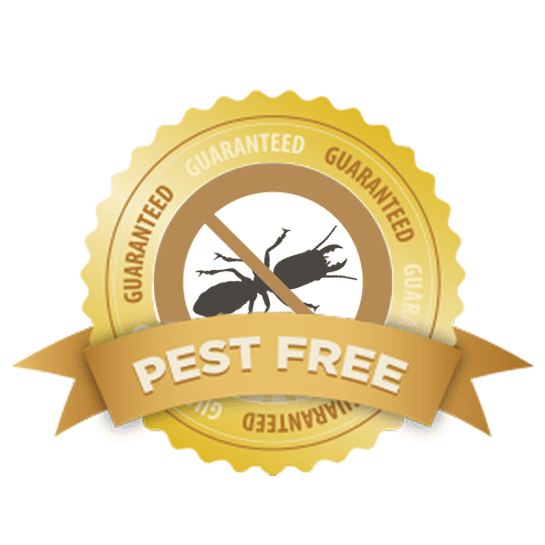Efficient A1 Bed Bug Treatment in Charlotte - Safe and Proven Techniques
Efficient A1 Bed Bug Treatment in Charlotte - Safe and Proven Techniques
Blog Article
Bed Insect Therapy Break Down: Comparing Chemical Vs. Non-Chemical Solutions
In the world of parasite control, particularly when handling the relentless issue of bed insects, the choice in between chemical and non-chemical therapy options can be a crucial one. Both methods provide distinct advantages and downsides, influencing factors such as efficiency, safety and security considerations, and overall cost. By checking out the nuanced information of each technique, a more clear understanding of which course to go after in dealing with a bed insect invasion can be acquired.
Efficiency of Chemical Therapies
Chemical therapies for bed insect infestations have been commonly identified for their potent and rapid efficiency in eradicating these pests. When taking into consideration the effectiveness of chemical therapies, it is vital to understand that they can offer a complete and quick solution to a bed bug problem. Professional exterminators frequently depend on insecticides to target bed insects at numerous phases of their life cycle, consisting of nymphs, grownups, and eggs. These chemicals generally function by interrupting the bed bugs' nervous system, bring about paralysis and eventual death.
In addition, chemical treatments have the advantage of using residual impacts, implying that they can remain to eliminate bed insects even after the first application. This residual activity is particularly advantageous in combating any prospective re-infestations. Additionally, the fast action of chemical treatments can bring relief to people dealing with severe bed insect infestations, allowing them to regain control of their living rooms quickly.
Safety Worry About Chemical Solutions
One crucial facet that needs cautious consideration when using chemical remedies for bed insect treatment is making certain the safety and security of passengers and the environment. Direct exposure to certain chemicals made use of in bed insect therapies can lead to respiratory concerns, skin irritability, or other damaging reactions, especially in individuals with pre-existing problems or sensitivities.
Furthermore, the ecological effect of chemical solutions is an additional significant factor to consider. Some pesticides utilized in bed pest treatments might be harmful to advantageous pests, wildlife, and ecological communities if they leach into the soil or water systems. It is necessary to use chemical treatments carefully, following security standards, and considering less toxic choices to minimize these risks and guarantee the reliable and safe administration of bed insect problems.
Advantages of Non-Chemical Approaches
Thinking about the possible security issues and environmental impact linked with chemical remedies for bed pest therapy, checking out non-chemical methods provides an appealing choice with several distinct benefits. Non-chemical therapies are eco friendly, as they do not add to air or water contamination, making them a sustainable selection for insect control.
In addition, non-chemical options can be reliable in targeting bed bugs, consisting of hard-to-reach areas where chemical therapies may not permeate - A1 charlotte bed bug exterminator. Approaches such as warm therapy, vacuuming, heavy steam cleansing, and try this out cushion coverings provide extensive eradication without the usage of hazardous chemicals.
Limitations of Non-Chemical Treatments

In addition, non-chemical treatments usually need numerous applications to achieve effective eradication. This can be lengthy and may not always guarantee full elimination of all bed pests and their eggs, particularly in surprise or hard-to-reach locations.
Moreover, the success of non-chemical therapies greatly relies upon correct application and thoroughness, which can be testing for individuals without professional know-how. Inadequate application of non-chemical methods might cause incomplete removal, causing relentless problems and the need great post to read for additional treatments.
As a result, while non-chemical therapies have their benefits, it is essential to acknowledge these restrictions and consider them when establishing one of the most effective method for handling bed insect invasions.
Expense Comparison: Chemical Vs. Non-Chemical Options
Provided the restrictions connected with non-chemical treatments, an important element to assess in the context of bed insect monitoring is the price contrast between chemical and non-chemical options. Chemical therapies typically include the application of insecticides by professionals, which can range from $250 to $900 per room, relying on the extent of the problem and the dimension of the location to be dealt with. In comparison, non-chemical therapies like warm therapy or vapor can be extra expensive, with prices ranging from $1,000 to $6,000 for an entire home. While the preliminary expense of chemical therapies might appear lower, multiple treatments might be required to totally remove the invasion, potentially raising the total cost. On the other hand, non-chemical options might supply a more eco-friendly and lasting service, although they can be cost-prohibitive for some individuals. Eventually, when taking into consideration the cost of bed pest treatment alternatives, it is vital to weigh the ahead of time expenses versus the effectiveness and long-term sustainability of the chosen approach.
Conclusion

Taking into consideration the potential security concerns and environmental influence linked with chemical Recommended Site options for bed insect treatment, discovering non-chemical strategies offers an encouraging choice with several unique advantages.Given the restrictions linked with non-chemical therapies, a crucial aspect to assess in the context of bed insect monitoring is the price comparison between chemical and non-chemical alternatives. In contrast, non-chemical therapies like warmth treatment or vapor can be much more expensive, with prices ranging from $1,000 to $6,000 for an entire home. While the initial cost of chemical therapies might seem lower, multiple therapies may be needed to fully eliminate the infestation, possibly raising the general expense.In final thought, when contrasting chemical and non-chemical bed bug treatment choices, it is necessary to think about efficiency, safety and security, benefits, restrictions, and expense.
Report this page